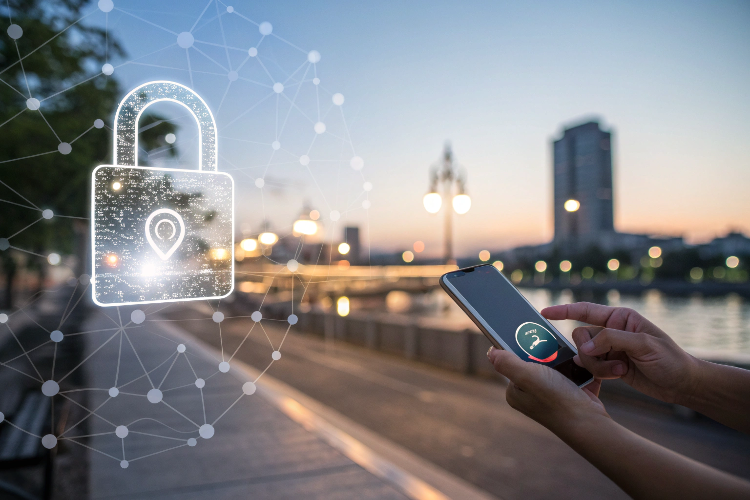Blog
Why Cyber Hygiene is Essential for Everyone ?
Cybersecurity & Data Privacy ▪ 2025-03-11

In today’s digital-first world, cyber threats are growing at an alarming rate. Every day, millions of people become victims of hacking, phishing scams, data breaches, and identity theft. Whether you’re an individual, a business owner, or a government entity, cyber hygiene is essential to protect sensitive data, maintain privacy, and prevent financial loss.
Cyber hygiene refers to a set of practices and habits that keep your devices, online accounts, and personal information safe from cyber threats. Just like personal hygiene keeps you healthy, cyber hygiene safeguards your digital life.
In this comprehensive guide, we will explore the importance of cyber hygiene, best practices, and how to improve cybersecurity awareness to keep your digital world secure.
What is Cyber Hygiene?
🚀 Cyber hygiene refers to:
✅ Protecting online accounts from hackers, data breaches, and unauthorized access.
✅ Ensuring devices and software are updated, secure, and free from malware.
✅ Practicing safe online habits to avoid phishing scams and cyberattacks.
✅ Maintaining strong passwords and using multi-factor authentication (MFA).
✅ Regularly backing up important data to prevent loss due to cyber incidents.
💡 Example: Cybercriminals use weak passwords, outdated software, and phishing scams to gain access to personal data and business accounts.
🔗 Pro Tip: Cyber hygiene should be practiced daily, just like washing your hands to prevent illness.
1️⃣ Why Cyber Hygiene is Essential?
🔹 1. Prevents Identity Theft
✔ Identity theft occurs when hackers steal personal information to impersonate victims.
✔ Cybercriminals use stolen credentials to open fraudulent accounts, apply for loans, and commit fraud.
✔ Weak passwords, unsecured Wi-Fi, and phishing scams make users vulnerable.
💡 Example: In 2021, identity theft led to $52 billion in financial losses for victims worldwide.
🔗 Pro Tip: Always use unique, complex passwords and enable multi-factor authentication (MFA).
🔹 2. Protects Financial Data
✔ Cybercriminals target banking credentials, credit card information, and digital wallets.
✔ Phishing emails trick users into entering sensitive financial details on fake websites.
✔ Ransomware attacks lock important data until victims pay a ransom.
💡 Example: The WannaCry ransomware attack (2017) targeted hospitals, businesses, and government agencies, demanding Bitcoin payments.
🔗 Pro Tip: Use a virtual private network (VPN) when accessing financial accounts online.
🔹 3. Safeguards Business Operations
✔ Poor cyber hygiene can lead to business data breaches, customer data leaks, and reputational damage.
✔ Small businesses are prime targets for cyberattacks due to weak security measures.
✔ Cyberattacks can result in millions of dollars in financial losses and legal penalties.
💡 Example: In 2020, a cyberattack on Twitter compromised high-profile accounts, including Elon Musk and Barack Obama, to promote a Bitcoin scam.
🔗 Pro Tip: Businesses must train employees on cybersecurity awareness and enforce strict access controls.
🔹 4. Prevents Phishing & Social Engineering Attacks
✔ Phishing attacks trick users into clicking fake links and entering login credentials.
✔ Social engineering manipulates victims into revealing confidential data.
✔ Hackers impersonate banks, government agencies, or tech support to scam users.
💡 Example: Cybercriminals sent fake IRS tax refund emails to thousands of victims in 2022, stealing millions in fraudulent transactions.
🔗 Pro Tip: Never click on unexpected links or download attachments from unknown sources.
🔹 5. Secures Personal & Work Devices
✔ Outdated devices and software are vulnerable to cyberattacks.
✔ Public Wi-Fi networks can expose your data to hackers using man-in-the-middle attacks.
✔ Malware infections can spread through unsecured devices, USBs, and email attachments.
💡 Example: The Mirai Botnet attack infected hundreds of thousands of IoT devices, launching massive DDoS attacks worldwide.
🔗 Pro Tip: Enable automatic software updates and use trusted security software.
2️⃣ Essential Cyber Hygiene Best Practices
🔹 1. Use Strong, Unique Passwords for Every Account
✔ Use 12-16 characters with uppercase, lowercase, numbers, and symbols.
✔ Avoid common passwords like "123456" or "password".
✔ Use a password manager like 1Password, Bitwarden, or LastPass to store complex passwords.
💡 Example: Instead of “JohnDoe123”, use “Tq$8pLm&9vZ#P!”.
🔗 Pro Tip: Change passwords every 3–6 months for critical accounts like banking and email.
🔹 2. Enable Multi-Factor Authentication (MFA)
✔ MFA adds an extra layer of security beyond just a password.
✔ Use an authenticator app (Google Authenticator, Authy) instead of SMS codes.
✔ Protects against credential stuffing attacks.
💡 Example: Google reports that MFA blocks 99.9% of automated cyberattacks.
🔗 Pro Tip: Enable MFA on email, social media, banking, and cloud storage accounts.
🔹 3. Regularly Update Devices & Software
✔ Cybercriminals exploit outdated software vulnerabilities to access data.
✔ Always install security updates and patches for operating systems, browsers, and apps.
✔ Use auto-updates to stay protected against the latest cyber threats.
💡 Example: The Equifax breach (2017) occurred because the company failed to update security patches, exposing 147 million user records.
🔗 Pro Tip: Set your computer, smartphone, and software to update automatically.
🔹 4. Beware of Phishing Scams & Fake Websites
✔ Check email sender addresses carefully before clicking links.
✔ Avoid logging into accounts from email links—go directly to the official website.
✔ Watch out for urgent messages demanding immediate action (common in phishing scams).
💡 Example: A fake Netflix email asks users to enter credit card details on a phishing site.
🔗 Pro Tip: Use a web security tool like Norton Safe Web to detect malicious websites.
🔹 5. Backup Important Data Regularly
✔ Cyberattacks like ransomware can encrypt and lock files.
✔ Store backups on encrypted cloud storage or an external hard drive.
✔ Use the 3-2-1 backup strategy:
✔ 3 copies of your data
✔ 2 different storage types
✔ 1 offsite backup
💡 Example: Businesses with frequent backups recover faster from cyberattacks.
🔗 Pro Tip: Automate weekly or daily backups to ensure data protection.

